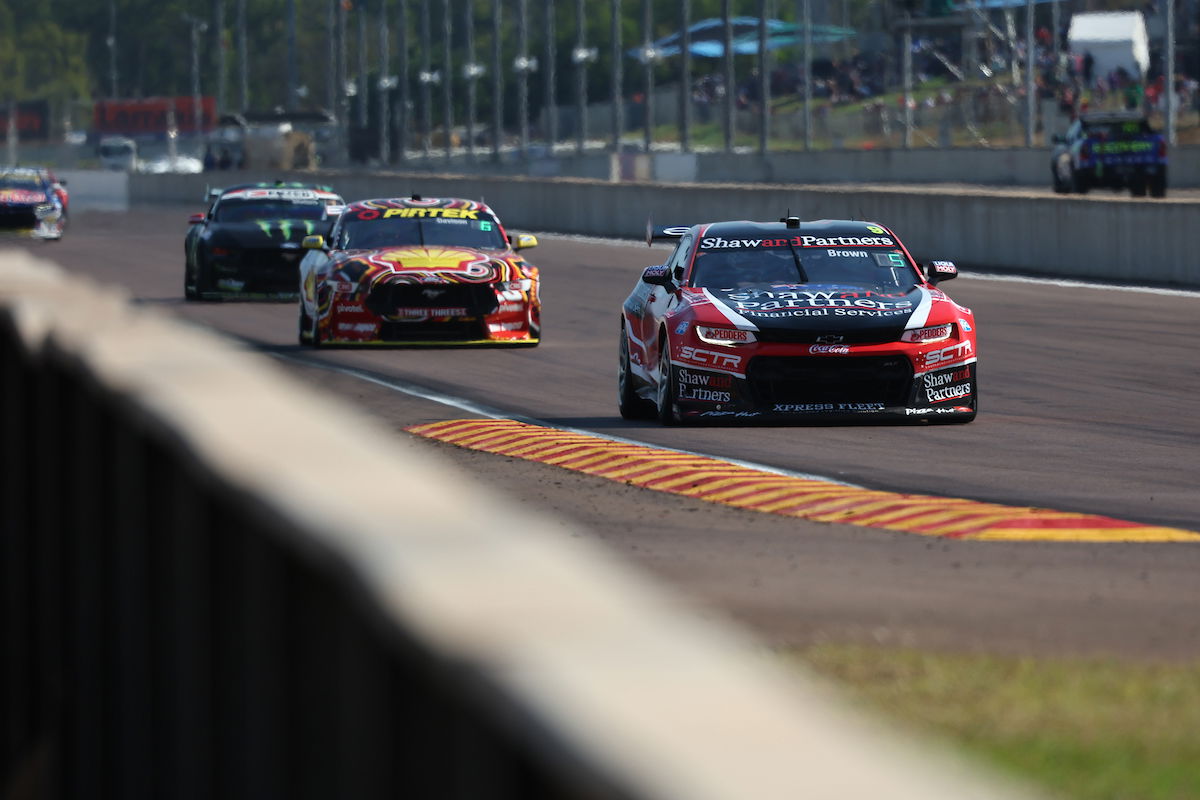

Supercars’ motorsport department and homologation teams are meeting this week ahead of possible Gen3 parity adjustments.
Parity, or possible lack thereof, has been an issue in the championship since the latter months of last year when Gen3 was still in development.
While ructions eased when cars hit the track in competition for the first time in the Newcastle season-opener, it was quickly put back in the spotlight as Chevrolet Camaros came to dominate proceedings.
Crisis point was reached just over a week ago at the Hidden Valley event, which saw an all-Camaro top nine in Race 14 of the season and incendiary comments from those who field/drive Mustangs, including via an official Ford Australia press release.
Supercars advised last Wednesday of an official parity review following what is understood to have been a routine, post-event meeting of the Technical Working Group.
However, it is believed that homologation teams are involved in meetings this week in order to thrash out the issue.
There is hope that any changes which are deemed necessary would be known by the end of the week, before cars are dispatched either on the weekend or early next week for the long drive north to the NTI Townsville 500, which will be held on July 7-9.
What those changes would be remains to be seen.
Engine performance had been the key gripe, with claims that the Camaro’s accelerates better than the Mustang’s.
The Mustang’s 5.4-litre, Coyote-derived engine has undergone a succession of calibration changes, and it is understood that the version used last time out at Hidden Valley was relatively well-received.
Still, engines remain a live issue, with Ford Performance chief Mark Rushbrook stating in May that map changes are an interim measure rather than a permanent solution.
Torque sensors are on order while it is understood that Supercars is still working towards parity testing using a transient dynamometer based in Melbourne.
However, aerodynamics are now back in focus.
That area had been a bone of contention all the way until a ‘mini VCAT’ was held at Temora in February, which resulted in the ironic outcome of the Camaro being given slightly more front downforce.
Aerodynamics faded into the background as a parity gripe for a handful of events as engines came under the microscope, but that began to change at Symmons Plains.
Now, it is argued that an aerodynamic deficiency is causing the Mustangs to wear out their rear tyres quicker than the Camaros do, and hence are less competitive in race conditions.
One theory is that the Mustang has inferior yaw traits.
There is no time for VCAT between now and Hidden Valley, not that there had been any expectation of such an activity in-season, and now would it capture yaw performance anyway.
Still, as was the case in 2019, there is scope for changes to be implemented thanks to CFD (computational fluid dynamics).
It is understood that the Ford camp would be able to respond in time for the Townsville event if CFD work leads to Supercars approving a change in bodywork specifications.
Camaro drivers have won 14 of the 15 races so far this year.



















Discussion about this post